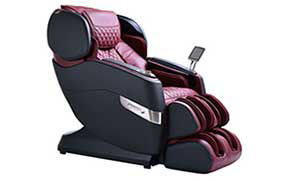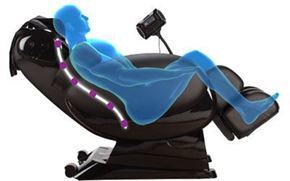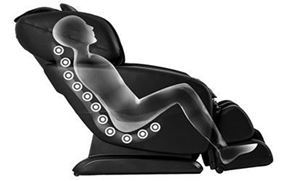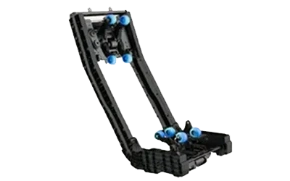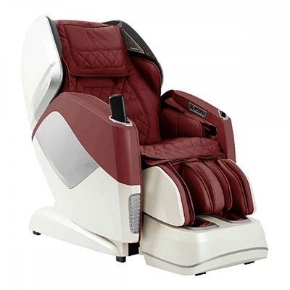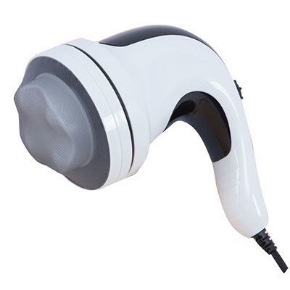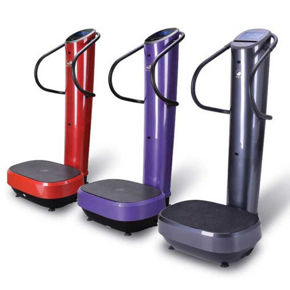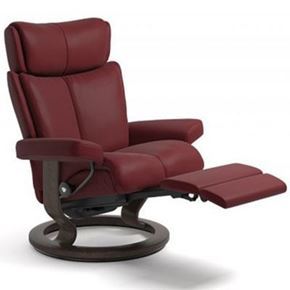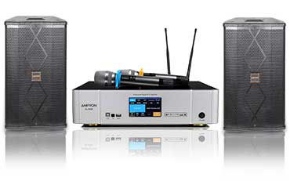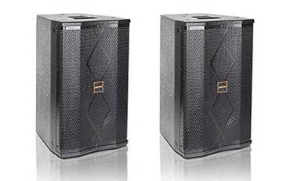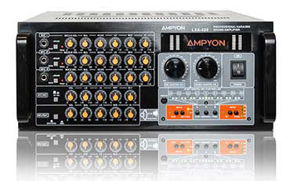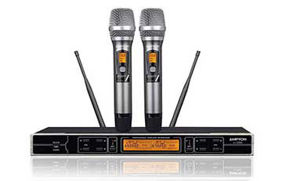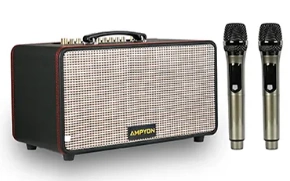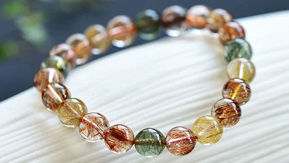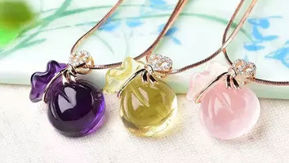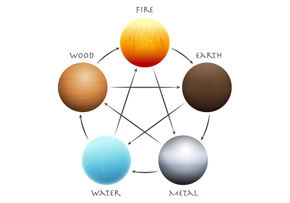An Introduction to the Concept and Philosophy Behind Healing Jewelry
Jewelry has adorned the human body for millennia—not just as a symbol of status or beauty, but as a powerful conduit for spiritual, emotional, and physical transformation. Welcome to the world of *healing jewelry*, where tradition meets intention, and every stone tells a story of wellness, energy, and meaning
Table of Contents
-
Introduction to Healing Jewelry
-
The Philosophy Behind Healing Jewelry
-
How Healing Jewelry Works
-
Common Materials Used in Healing Jewelry
-
Cultural and Historical Roots
-
Modern Interpretations and Uses
-
Scientific Perspective: Placebo or Power?
-
Choosing the Right Healing Jewelry
-
Caring for Your Healing Jewelry
-
Final Thoughts
1. Introduction to Healing Jewelry
Healing jewelry refers to accessories—typically necklaces, bracelets, earrings, rings, or pendants—made with materials believed to possess healing energies. These materials may include gemstones, crystals, sacred metals, seeds, shells, or beads, each selected for their metaphysical properties. Unlike purely ornamental jewelry, healing jewelry is worn with intention: to balance chakras, boost confidence, repel negative energy, or promote well-being.
This isn’t a fleeting trend. Healing jewelry spans ancient civilizations, from Tibetan monks and Egyptian priests to Native American shamans. It embodies a blend of holistic philosophy, vibrational medicine, and aesthetic grace.
2. The Philosophy Behind Healing Jewelry
The foundation of healing jewelry lies in the principle that everything in the universe is made of energy—including humans, stones, and minerals. When our energy is aligned, we feel well, focused, and joyful. But when it becomes blocked or imbalanced, illness, stress, and emotional disharmony can arise.
Healing jewelry works as a wearable reminder and energetic tool. It is believed to interact with the wearer’s aura (energy field), harmonizing imbalances and restoring flow. This concept aligns with various Eastern philosophies like:
-
Chakra System (India) – Crystals are aligned with specific chakras to open, activate, or cleanse them.
-
Yin-Yang & Five Elements (China) – Jewelry is used to harmonize elemental energies like fire, water, and earth.
-
Reiki Energy Healing (Japan) – Certain stones are used as conduits for universal life force energy (Ki).
3. How Healing Jewelry Works
Energy Resonance
Each gemstone or material vibrates at a unique frequency. When worn close to the body, it interacts with the body’s electromagnetic field. This resonance can subtly influence mood, energy, and health.
Intention Setting
The wearer often sets a personal intention while putting on their jewelry. This could be as simple as “I am safe” or “I attract love.” Intention amplifies the effects of the jewelry by directing the mind and energy toward a desired outcome.
Symbolism and Mindfulness
Beyond energy work, healing jewelry fosters mindfulness. Just touching your stone during a stressful moment can anchor you back to calmness. It becomes a spiritual anchor—a silent partner in your wellness journey.
4. Common Materials Used in Healing Jewelry
Let’s explore the powerful components that give healing jewelry its magic:
Gemstones & Crystals
-
Amethyst – Calming, spiritual growth, protection
-
Rose Quartz – Love, emotional healing, self-acceptance
-
Black Tourmaline – Grounding, protection from negativity
-
Citrine – Manifestation, abundance, creativity
-
Clear Quartz – Amplification, clarity, universal healing
Sacred Seeds & Woods
-
Rudraksha Beads (India) – Spiritual awakening, protection
-
Sandalwood – Meditation, tranquility, divine connection
-
Bodhi Seeds – Enlightenment, mindfulness, compassion
Metals
-
Copper – Conducts energy, supports blood circulation
-
Silver – Intuition, emotional balance
-
Gold – Vitality, abundance, healing warmth
Dzi Beads (Tibet)
Carved agate beads said to hold protective powers and specific blessings depending on the number of “eyes” or patterns.
5. Cultural and Historical Roots
Ancient Egypt
Jewelry wasn’t merely decorative in Egypt—it was protection. Lapis Lazuli amulets, scarabs, and turquoise were used to honor gods, protect the soul, and guide the dead to the afterlife.
Traditional Chinese Medicine
Jade was seen as the "Stone of Heaven." Worn daily, it was believed to purify the body's energy and protect the heart and kidneys.
Indian Vedic Tradition
Chakras and healing stones are closely linked. Wearing gemstones to balance planetary influences (Navaratna) is still widely practiced.
Indigenous Traditions
Tribal communities worldwide—such as Native American or Andean shamans—use stones, shells, and seeds in jewelry to invoke spirits, healing, and ancestral guidance.
6. Modern Interpretations and Uses
In today’s wellness culture, healing jewelry has evolved without losing its soul. You’ll find it:
-
In Yoga & Meditation: Mala beads used to count mantras during meditation
-
At Wellness Centers: Crystal-infused jewelry lines promoting alignment and peace
-
In Fashion: Designers now blend aesthetic appeal with healing properties
-
In Therapy: Clients wear grounding stones during coaching or healing sessions
-
At Work: Entrepreneurs wear citrine for success or black tourmaline for protection from EMFs (electromagnetic fields)
This adaptability makes healing jewelry not just sacred but stylish.
7. Scientific Perspective: Placebo or Power?
While scientific consensus doesn’t confirm the metaphysical claims of healing stones, studies on placebo effect, mindfulness, and biofeedback show that belief and focus can change our physiology.
For example:
-
Touching a calming stone may reduce cortisol due to the placebo and tactile effects.
-
Setting intentions has been linked to greater emotional regulation and achievement.
-
Color therapy (used in some stones) is an accepted modality in psychological treatment.
Whether through placebo or real energy interaction, many wearers report noticeable improvements in mood, focus, and peace.
8. Choosing the Right Healing Jewelry
The right healing jewelry is not just about what looks good—it’s about what feels right. Here's how to choose yours:
By Intention
What do you need?
-
Peace → Amethyst
-
Love → Rose Quartz
-
Protection → Black Tourmaline
-
Energy Boost → Carnelian
By Chakra
Balance your energy centers:
-
Root → Red Jasper, Black Obsidian
-
Heart → Green Aventurine
-
Crown → Selenite, Amethyst
By Birthstone or Zodiac
Many people start their journey by wearing their birthstone, aligning with cosmic energies.
By Intuition
Let your gut guide you. The stone you’re drawn to may be exactly what you need.
9. Caring for Your Healing Jewelry
To keep your healing jewelry energetically clean and physically intact, follow these steps:
Energetic Cleansing
-
Smoke Cleansing: Use sage or palo santo
-
Moonlight: Recharge under a full moon
-
Sound: Use singing bowls or tuning forks
-
Salt: Place jewelry on a bed of Himalayan salt (not for metals)
Physical Care
-
Keep away from harsh chemicals or water
-
Store in a fabric pouch or sacred box
-
Regularly inspect for wear and tear
Cleansing is essential. Like a sponge, healing jewelry absorbs energies—it needs rest too.
10. Final Thoughts
Healing jewelry is more than just accessories—it’s a wearable intention, a spiritual tool, and a piece of ancient wisdom reborn in modern times. Whether you’re a believer in metaphysical properties or simply appreciate the beauty and mindfulness it encourages, healing jewelry offers a deeply personal journey.
From the sparkling clarity of clear quartz to the grounding embrace of obsidian, each piece tells a story. Your story.
So the next time you fasten that bracelet or feel the cool touch of a pendant on your chest, take a breath. Feel the intention. Let it guide you, heal you, and remind you: you are connected to something greater.


